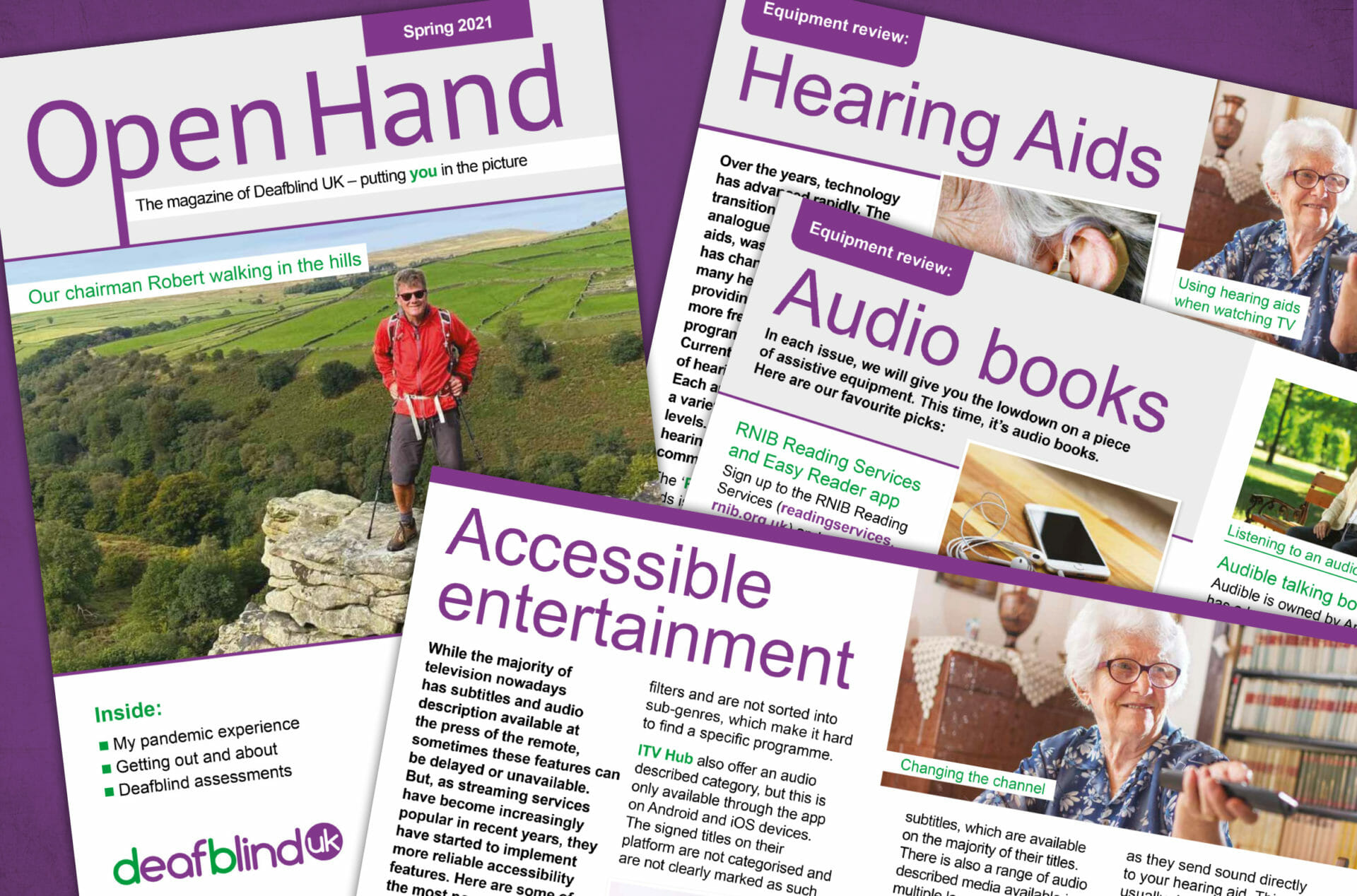Canes
Lots of people who are visually impaired use a cane to help them when they’re out and about.
Canes can be used for two reasons:
To tell other people that you have a visual impairment or that you are deafblind
Some people carry a cane to tell other people about their condition. Generally in the UK a white cane indicates that the user has a sight impairment and a red and white striped cane indicates that the user has a sight and hearing impairment (deafblind). A short cane, known as a symbol cane, is often carried by people who only want to use the cane for this purpose.
To help to find your way around
Longer canes can be used to help you navigate your way with confidence. By sweeping the cane in front of you from left to right you can detect objects that may be in your way. You can also use the cane to identify the kerb, to make sure you don’t walk into the road, or to identify key landmarks. For example, you may know that when the wall ends, the post box is a few steps to the left.
If you think that you might benefit from using a cane, contact your rehabilitation officer at your local authority. They will be able to advise you of the right cane for you and they will show you how to use it.
Assistance dogs
Assistance dogs are specially trained dogs which can help to guide you and keep you safe. These are sometimes known as guide dogs or hearing dogs. Assistance dogs will work with you and follow your commands to help keep you safe while you’re out and about.
If you think that you might benefit from an assistance dog, please contact Guide Dogs or Hearing Dogs.
Guiding
Some people need help from someone else to get around, this is known as guiding. If you know someone who is deafblind then you may need to guide them at some point. The most important thing to remember when guiding someone is to do it in the way that they are comfortable with. Remember, not everyone who is deafblind needs to be guided.
Tips for guiding someone who is deafblind
- Always introduce yourself, ask if they would like to be guided and if so, which side they would like you to be on
- Don’t grab their arm, let them take yours
- Aim to walk about half a step ahead of them
- Walk at the speed of the person you are guiding, not yours. Consider the person’s age and whether they have any other disabilities.
- Point out any steps or other potential hazards before you get to them. For steps and kerbs, tell them that you will be going up or down.
- When you have finished guiding, tell them you are leaving, never just walk away
- Think ahead, use common sense!

